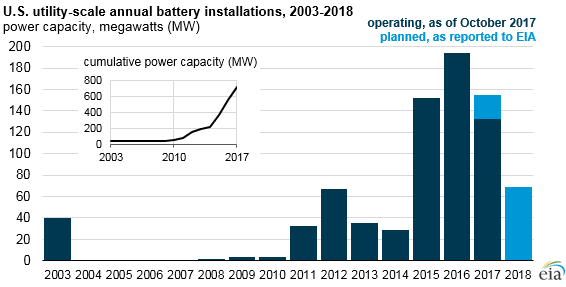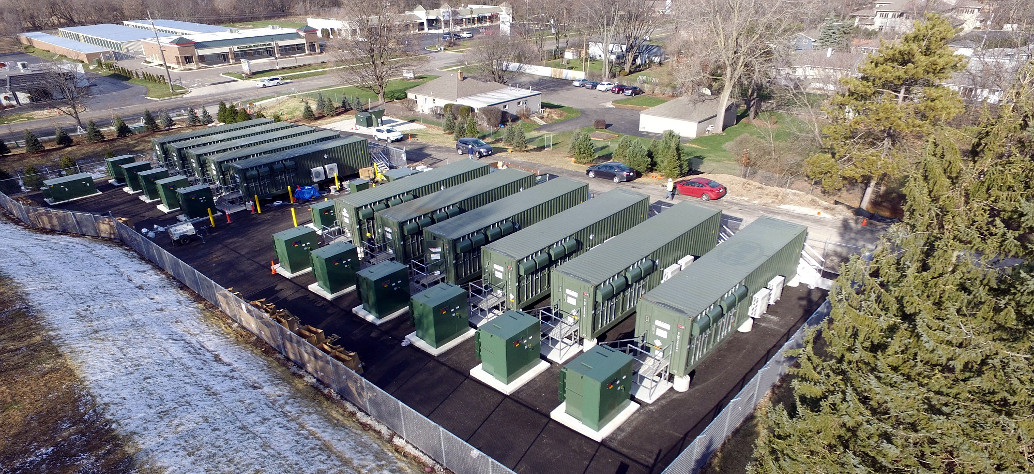While defenders of old and uncompetitive forms of energy decry the small capacity of battery storage that has been installed to date, the latest data form the U.S. Department of Energy’s Energy Information Administration (EIA) shows that battery deployment is gaining speed.
Specifically, this week EIA revealed that nearly 500 MW of large batteries have been deployed on the grid over the last three years, marking a big jump from previous years and representing the majority of installed capacity in the 21st century. EIA’s data does not include behind-the-meter batteries installed by residential customers or businesses.

EIA’s formal data in its Annual Electric Generator Report lags this by a year, but a look at the installed battery capacity through the end of 2016 shows a few trends.
First, lithium ion chemistry is increasingly dominating battery deployment, representing all of the new batteries deployed in 2016 and nearly all capacity put online in 2015.
Second, as it led in solar deployment, California is leading in large-scale battery deployment, with 29% of battery capacity deployed through the end of 2016 located in the Golden State. However, the largest battery recorded by capacity is located in Alaska, the 40 MW Fairbanks North Star.
And while batteries are being deployed widely by both utilities and non-utility independent power producers, the use cases vary somewhat. Both utilities and IPPs are widely deploying batteries for frequency regulation, however more of the batteries deployed by utilities are being used for peak shaving, with ramping support, provision of reactive power and backup power all popular uses as well.
In general, many of the batteries deployed by utilities are being used for multiple purposes.
Installed battery capacity still lags other pumped hydro storage, which can provide longer-duration storage. And in addition to batteries, EIA is reporting 42 MW of flywheel deployments through the end of 2016, as well as 405 MW of concentrating solar power (CSP) with thermal energy storage.
This content is protected by copyright and may not be reused. If you want to cooperate with us and would like to reuse some of our content, please contact: editors@pv-magazine.com.









By submitting this form you agree to pv magazine using your data for the purposes of publishing your comment.
Your personal data will only be disclosed or otherwise transmitted to third parties for the purposes of spam filtering or if this is necessary for technical maintenance of the website. Any other transfer to third parties will not take place unless this is justified on the basis of applicable data protection regulations or if pv magazine is legally obliged to do so.
You may revoke this consent at any time with effect for the future, in which case your personal data will be deleted immediately. Otherwise, your data will be deleted if pv magazine has processed your request or the purpose of data storage is fulfilled.
Further information on data privacy can be found in our Data Protection Policy.